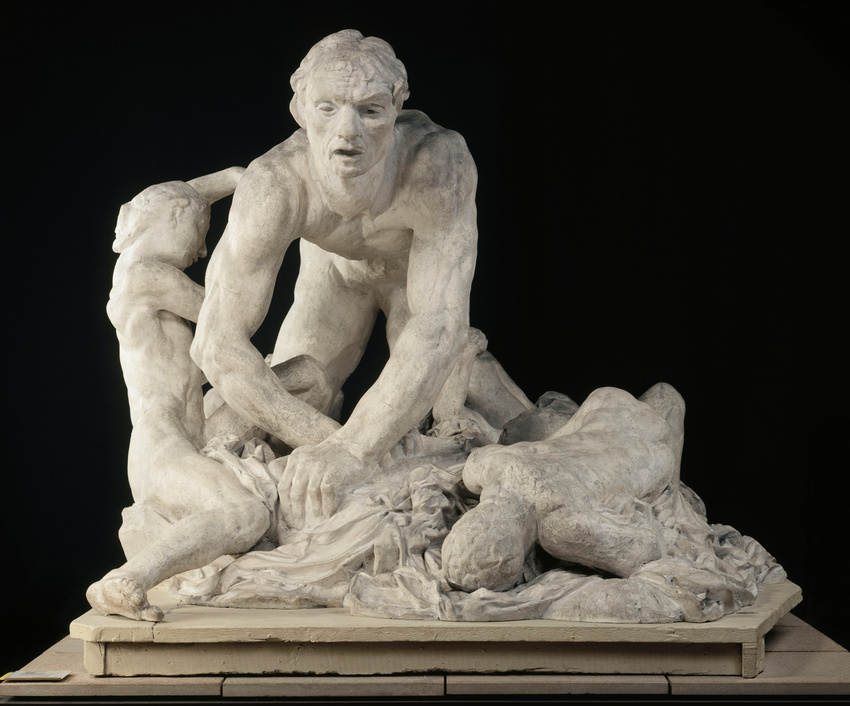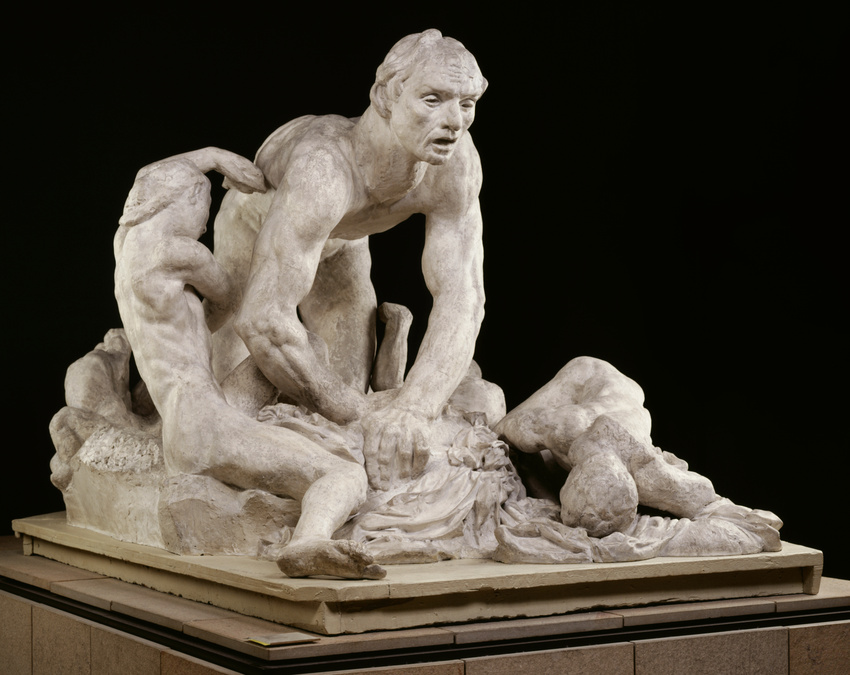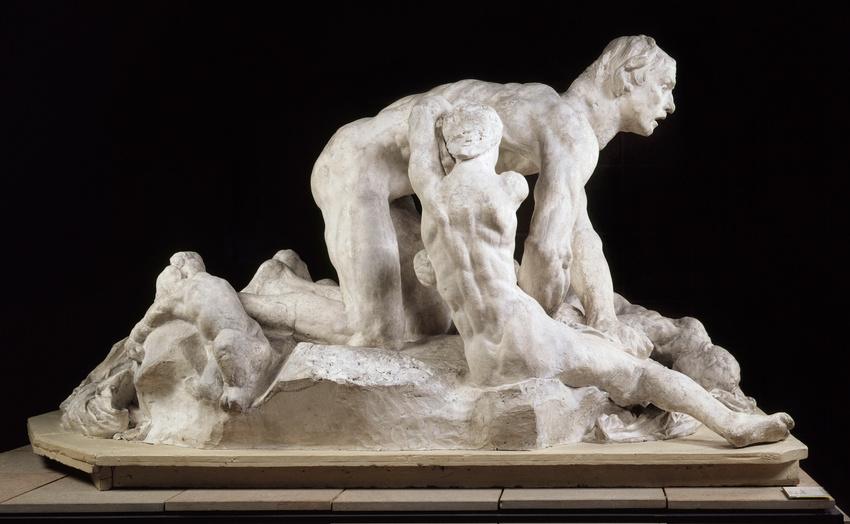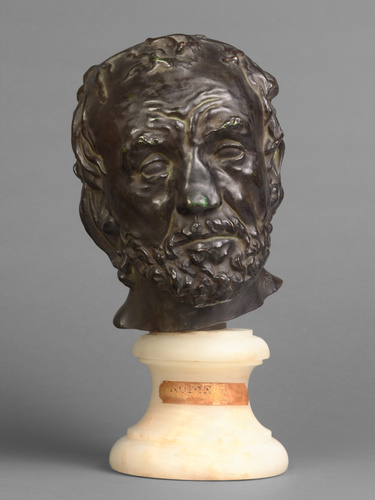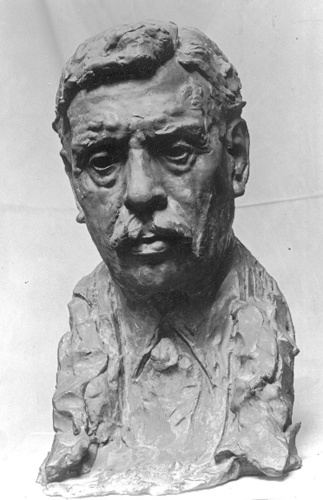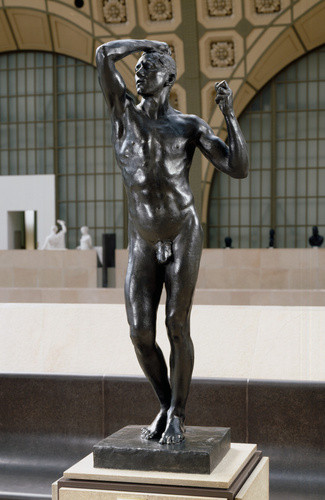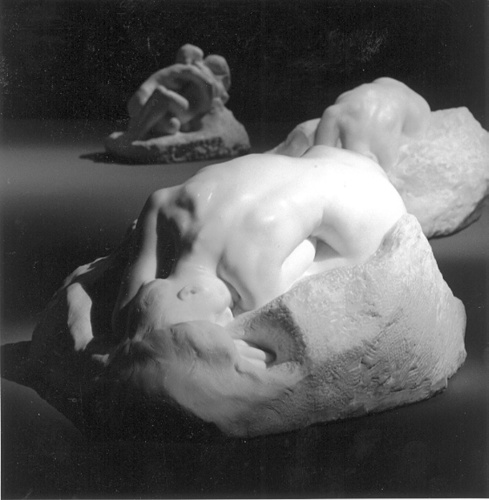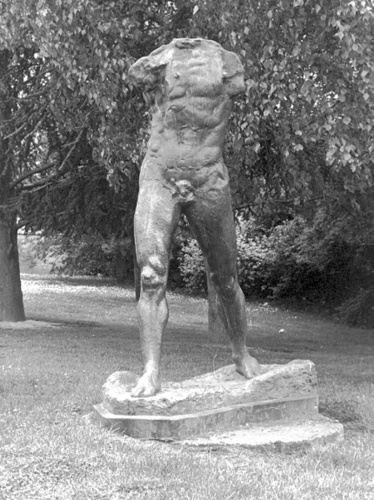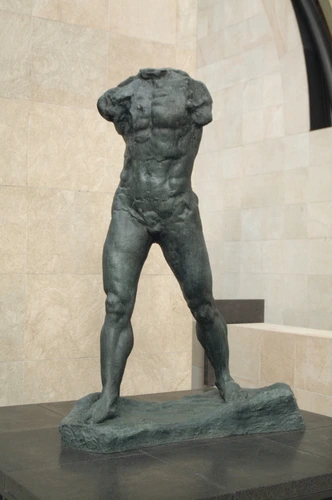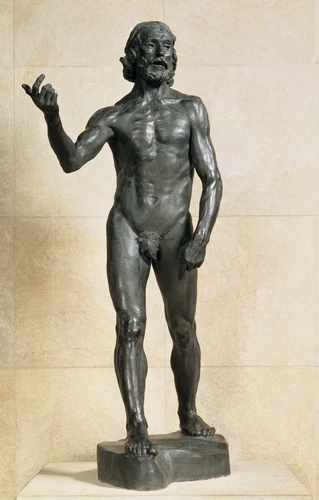Ugolin
Rodin said that The Divine Comedy never left him: he always had a copy of his pocket. It is one of the darkest episodes in Dante's immense poem that he has illustrated here. Count Ugolino, walled up with his sons in the prison that was to become their tomb, watched them die and, crazed with hunger, gnawed at their flesh before dying in his turn.
Ugolino wanders, stripped of all human dignity, reduced to a bestial state. "Thin, emaciated, his ribs sticking out under his skin (...), with gaping mouth and loose lip dribbling (...) the drool of a starving wildcat, he crawls like a hyena which has scratched up a decaying carcass over the fallen bodies of his sons whose inert arms and legs dangle here and there over the abyss." (Octave Mirbeau).
The figure is structured around a central void; the tortured modelling, the disarticulated bodies of the children and the deformed limbs all accentuate the morbid, dramatic mood. The composition also presents the premises of the process of assemblage, which Rodin later used systematically: the naked bodies were shaped and cast separately then assembled. After this they were linked together by draperies coated with plaster.
